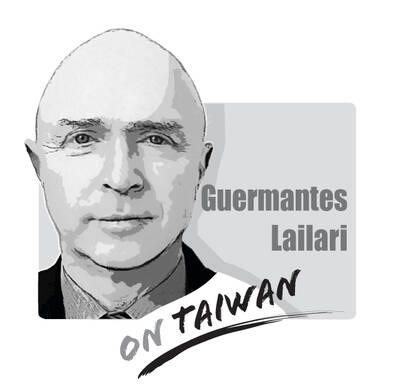At a critical moment in the US-China confrontation, Nikkei Asia took a bold leap — visiting Taiwan to conduct an interview with President William Lai (賴清德), and publishing a rare and extensive report on Tuesday. Other than to echo Lai’s policy of staying firmly rooted in Taiwan, and expanding global presence and marketing worldwide, this interview served two main purposes.
The first is one domestic in nature. Nikkei Asia aims to align with the strong sentiment among the Japanese public of supporting Taiwan and remaining suspicious of China. Interviewing Lai, Taiwan’s pro-Japan president, could help to build a bipartisan consensus in Japan to support Taiwan — something that could help boost the low approval ratings of Japanese Prime Minister Shigeru Ishiba’s Cabinet. It also allows Japan to better understand and accommodate Taiwan’s urgent needs, thereby fostering an atmosphere of a shared purpose and laying the foundation for deeper cooperation between the two countries in the future.
The second purpose is diplomatic. By providing Lai with a platform, Japanese media indirectly expressed a message to the US and the rest of the world: Japan and Taiwan share a common destiny.
As the US-Japan alliance strengthens its policies and cooperation with regard to Taiwan, this move could lead to further substantive cooperation between Taiwan, Japan and the US.
This unprecedented interview not only highlighted Japan’s strong recognition of Lai’s political stance and international role, but also garnered significant global attention. In the interview, Lai made several clear-cut statements on Taiwan-Japan relations, US-Taiwan relations, US-China rivalry and the Taiwan-China situation.
Behind this interview was a strong political intent. It was more than just an interview — it was a diplomatic and strategic signal between Taiwan and Japan. It reflects the comprehensive deepening of the two countries’ relationship, further highlighting Taiwan’s indispensable and central role in Indo-Pacific strategy.
With the Japanese media as his conduit, Lai also took advantage of the opportunity to promote Taiwan’s plans to leverage its production and manufacturing capabilities to establish a “non-red” global semiconductor supply chain partnership for democratic countries. Given Taiwan’s sheer strength in the global semiconductor industry, there is every reason to believe that such a vision would be realized.
Wang Hui-sheng is chief director of the Kisei Ladies’ and Children’s Hospital in Japan, and a founding member of the East Asian Research Institute.
Translated by Kyra Gustavsen

Chinese state-owned companies COSCO Shipping Corporation and China Merchants have a 30 percent stake in Kaohsiung Port’s Kao Ming Container Terminal (Terminal No. 6) and COSCO leases Berths 65 and 66. It is extremely dangerous to allow Chinese companies or state-owned companies to operate critical infrastructure. Deterrence theorists are familiar with the concepts of deterrence “by punishment” and “by denial.” Deterrence by punishment threatens an aggressor with prohibitive costs (like retaliation or sanctions) that outweigh the benefits of their action, while deterrence by denial aims to make an attack so difficult that it becomes pointless. Elbridge Colby, currently serving as the Under
The Ministry of the Interior on Thursday last week said it ordered Internet service providers to block access to Chinese social media platform Xiaohongshu (小紅書, also known as RedNote in English) for a year, citing security risks and more than 1,700 alleged fraud cases on the platform since last year. The order took effect immediately, abruptly affecting more than 3 million users in Taiwan, and sparked discussions among politicians, online influencers and the public. The platform is often described as China’s version of Instagram or Pinterest, combining visual social media with e-commerce, and its users are predominantly young urban women,
Most Hong Kongers ignored the elections for its Legislative Council (LegCo) in 2021 and did so once again on Sunday. Unlike in 2021, moderate democrats who pledged their allegiance to Beijing were absent from the ballots this year. The electoral system overhaul is apparent revenge by Beijing for the democracy movement. On Sunday, the Hong Kong “patriots-only” election of the LegCo had a record-low turnout in the five geographical constituencies, with only 1.3 million people casting their ballots on the only seats that most Hong Kongers are eligible to vote for. Blank and invalid votes were up 50 percent from the previous
Japanese Prime Minister Sanae Takaichi lit a fuse the moment she declared that trouble for Taiwan means trouble for Japan. Beijing roared, Tokyo braced and like a plot twist nobody expected that early in the story, US President Donald Trump suddenly picked up the phone to talk to her. For a man who normally prefers to keep Asia guessing, the move itself was striking. What followed was even more intriguing. No one outside the room knows the exact phrasing, the tone or the diplomatic eyebrow raises exchanged, but the broad takeaway circulating among people familiar with the call was this: Trump did